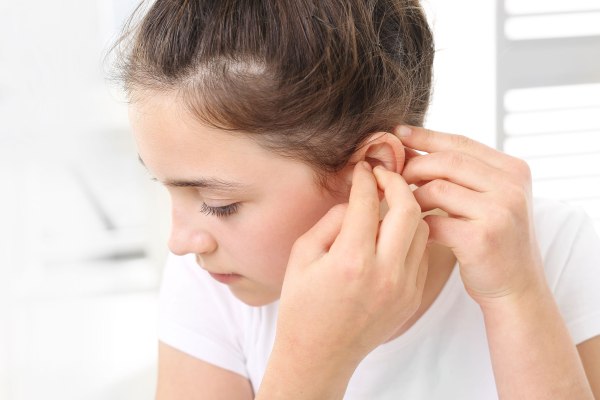My career has spanned large consumer tech companies and early-stage startups (Speck Products, SOL Republic, Pebble). During this time, I’ve held various executive positions leading both marketing and sales strategy. I’ve launched some of the most disruptive hardware lifestyle tech brands on the market, from iPhone cases to portable power, wireless headphones and speakers, smartwatches and, now, augmented audio devices.
And I’ve done all this in spite of the fact that I’ve had severe hearing loss most of my life. That’s not to say that my career success came easy, though. Working in sales, where you’re spending your day-to-day on the phone or leading meetings, posed many challenges. For 10 years, I suffered with only wearing one hearing aid because I couldn’t afford a second (even though my hearing loss is severe enough to require two). Listening, reading lips and trying to keep up with conversations — something we’re quick to take for granted — was physically and emotionally exhausting. Yet I hid my hearing loss because I didn’t want to be treated differently at work.
At one point, as a young adult living in Silicon Valley, I had to make the difficult choice between paying my rent or buying hearing aids. I ended up draining my savings to replace a broken hearing aid that was only two years old, simply because it was already discontinued and therefore couldn’t be repaired. It took three years for me to financially recover from that experience. Something as indispensable as hearing aids — which cost upwards of $5,000 (and that’s just for the basics) — should be as accessible and, frankly, affordable as a smartphone.
As the World Health Organization reported, 1.1 billion teenagers and young adults are at risk of hearing loss. We can’t ignore this any longer, and we can’t afford to be ignorant in assuming that this only affects an aging population, either. Considering how many people have hearing loss, or are at risk, it’s astonishing to see that innovation in this space has been painfully stagnant. But it doesn’t have to stay that way.
Consumer technology companies could help change the status quo — in a big way. However, for the most part, they’ve understandably been conservative because their hands are tied by existing rules and regulations. Consider how their involvement might change the stigma around what it means to have hearing loss; how much faster we could innovate and bring products to market; how we might be able to offer products at accessible price points for millions of consumers with mild to moderate hearing loss.
The consumer electronics industry has the resources, the talent and the know-how to innovate hearing technologies.
It took years before I was comfortable talking about my hearing loss, but now I proudly advocate for the hard of hearing community and push for innovation in hearing accessibility. I’ve been recognized by the industry and awarded Silicon Valley’s Top 40 Under 40, 2015 Women on the Move by Women’s Business Journal and received a U.S. Congressional Award for my advocacy work in hearing health and technology.
We’re already starting to see the tide turn in favor of better hearing health care. In June, the National Academies of Sciences, Engineering, and Medicine released their recommendation to the FDA in favor of opening the market for a new category of over-the-counter hearing devices. Last fall, the President’s Council of Advisors on Science and Technology (PCAST) issued a report in support of the need for regulatory changes to promote innovation in hearing technologies, which immediately jump started a national conversation about the issues affecting our community.
In the tech space, some of the major smartwatch players have collaborated to develop a hearing control app that’s compatible with Starkey’s Halo hearing aids. This kind of collaboration is just the tip of the iceberg, but shows the potential for what’s possible. The consumer electronics industry has the resources, the talent and the know-how to innovate hearing technologies — it’s time we handed over the reins.
If the ability to access over-the-counter technology doesn’t change, many young adults will not be able to afford the prohibitively expensive hearing aids — or necessarily even want to wear one because of the associated stigma. I don’t want anyone to suffer financially or socially just because current regulation allows the hearing aid companies to monopolize this space.
My lifelong mission is to continue to be a strong advocate for products that enhance the way we hear the world. I never want anyone to struggle the way I grew up, just because of a disability or challenge that they face. There’s no doubt in my mind that technology can help people with hearing issues gain confidence in all of their activities.
To the FDA, I implore you to set a new precedent. Open the market so that these consumer electronic companies can introduce over-the-counter, innovative and socially acceptable lifestyle brands. Consider people like me, who have struggled with hearing loss their entire life. Consider the 1.1 billion young adults who don’t even know yet that they’re at risk. There has to be a better, more affordable path forward to expand the options available to consumers. It’s our only chance toward living a better quality life.
